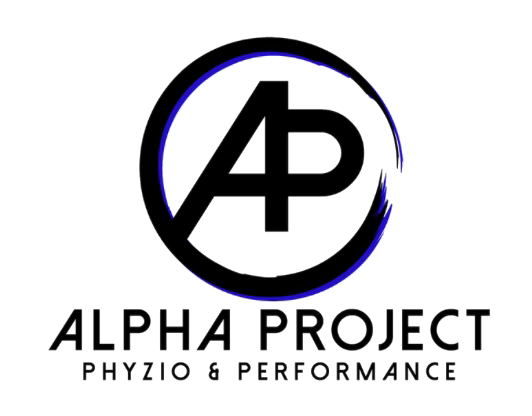5K Strength Training Workouts
6 Workouts to Incorporate into Your 5K Strength Training Routine
Do you want to improve your 5K time? Incorporating strength training is one of the most effective ways to boost your speed, endurance, and overall performance.
There are plenty of running plans out there that include strength training—but not all of them are created equal. The right plan should support your running goals, match your fitness level, and focus on exercises that strengthen the muscles most used in running.
Here are our top strength exercises to help you run a faster 5K—whether you're just starting out or training for your next PR.
Why Is Strength Training Important for Runners?
Strength training is essential for 5K runners, helping muscles and joints handle the repeated impact of each stride while improving running efficiency and performance. By targeting key muscle groups like the hips, glutes, hamstrings, calves, and core, you can reduce injury risk and enhances speed, power, and endurance.
Benefits of Strength Training for 5K Runners:
Improves running economy: Stronger muscles use less energy at the same pace.
Reduces injury risk: Strengthens hips, glutes, hamstrings, and core to protect against common running injuries.
Boosts speed and power: Supports a stronger finish through explosive strength and muscular endurance.
6 Exercises to Use for Your 5K Strength Training Program
Incorporating targeted strength exercises into your weekly routine can significantly improve performance and reduce your risk of injury.
Depth Drop
Bulgarian Split Squat
Soleus Calf Raise
Shoulder Row
Split Squat Isometric
The Kickstand Deadlift
1. Depth Drop
The depth drop is valuable for 5K training because it trains your body to absorb impact efficiently, reducing stress on joints during running. It builds eccentric strength in the lower body, helping runners handle repetitive ground contact with less fatigue. This exercise also improves reactivity and stability, leading to smoother, more efficient strides.
2. Bulgarian Split Squat
The Bulgarian Split Squat is a powerful exercise for long-distance runners, helping build strength, correct muscle imbalances, improve balance, and increase hip mobility—all essential for 5K training.
3. Soleus Calf Raise
This is a key strength exercise for 5K training because it targets the powerhouse muscles that drive running—the hamstrings and the soleus, which is especially active when the knee is bent and during sustained efforts. Weakness in the soleus can contribute to common issues like calf tightness, Achilles tendonitis, and plantar fasciitis, so strengthening it can help prevent problems that often sideline runners.
4. Shoulder Row
For 5K training, this upper-body exercise is important for runners because it targets the traps and lats—muscles that runners often neglect. Weakness here can cause rounded shoulders, poor posture, and reduced running efficiency. Strong lats and traps also support the posterior sling, improving stability and form with every stride.
5. Split Squat Isometric
The split squat isometric is important for 5K training because it builds strength and endurance in the quads, glutes, and hamstrings, which power every stride. Holding the position also challenges stability and balance, helping runners stay efficient on one leg at a time. Additionally, it enhances hip mobility and control, thereby reducing injury risk and supporting improved running mechanics.
6. The Kickstand Deadlift
The kickstand deadlift is an effective exercise for 5K training because it strengthens both the glutes and hamstrings—two of the most important muscle groups for runners. Similar to the Bulgarian split squat, it helps identify and correct imbalances by working each side independently.
Related Post: 4 Effective Isometric Exercises for Runners
What Else Should You Know About 5K Training?
Whether you’re new to 5K training or looking for helpful tips, keeping recovery and overall fitness in mind is key:
Strength training frequency: 2–3 sessions per week is sufficient for most runners. Schedule them on easy running or cross-training days to avoid fatigue during speed workouts.
Cross-training: In between your workouts, activities like cycling, swimming, or rowing maintain cardiovascular fitness while reducing stress on your legs.
Mobility and flexibility: Include stretching, mobility exercises, and foam rolling to prevent tightness and maintain range of motion.
Sleep and nutrition: Prioritize 7–9 hours of sleep per night and a balanced diet to support recovery and performance.
Recovery tips:
Separate intense sessions: Avoid running hard (intervals or long runs) on the same day as a heavy leg or full-body strength session.
Rest or active recovery days: Consider light jogging, easy cycling, walking, swimming, or yoga after a tough strength session.
Listen to your body: Soreness is normal, but sharp pain or persistent fatigue is a sign you need extra recovery.
The Final Word: 5K Strength Training for Runners
Strength training is important for 5K runners, boosting efficiency, power, and injury resilience. Just two workout sessions per week can help you run stronger, faster, and with greater confidence.
Whether you’re running your first 5K race or a half marathon it is important to follow a structured, runner-specific strength plan. Alpha Project’s virtual strength training program for runners helps runners build strength, remain healthy and become more efficient with every stride.


